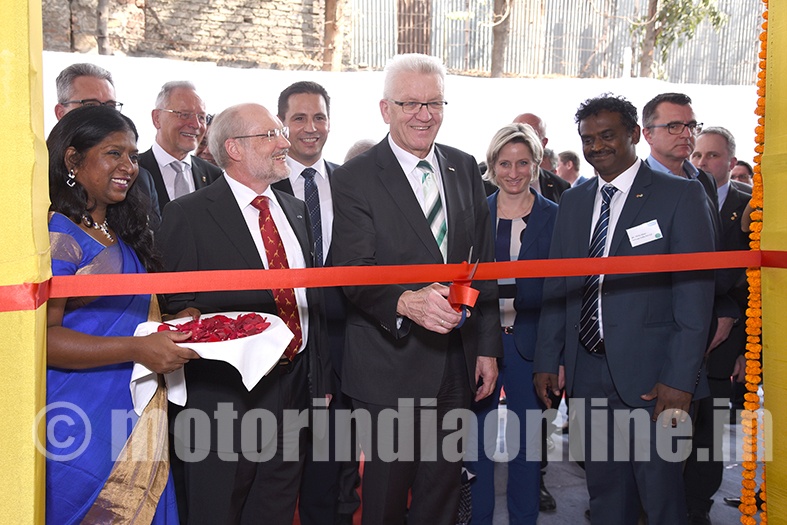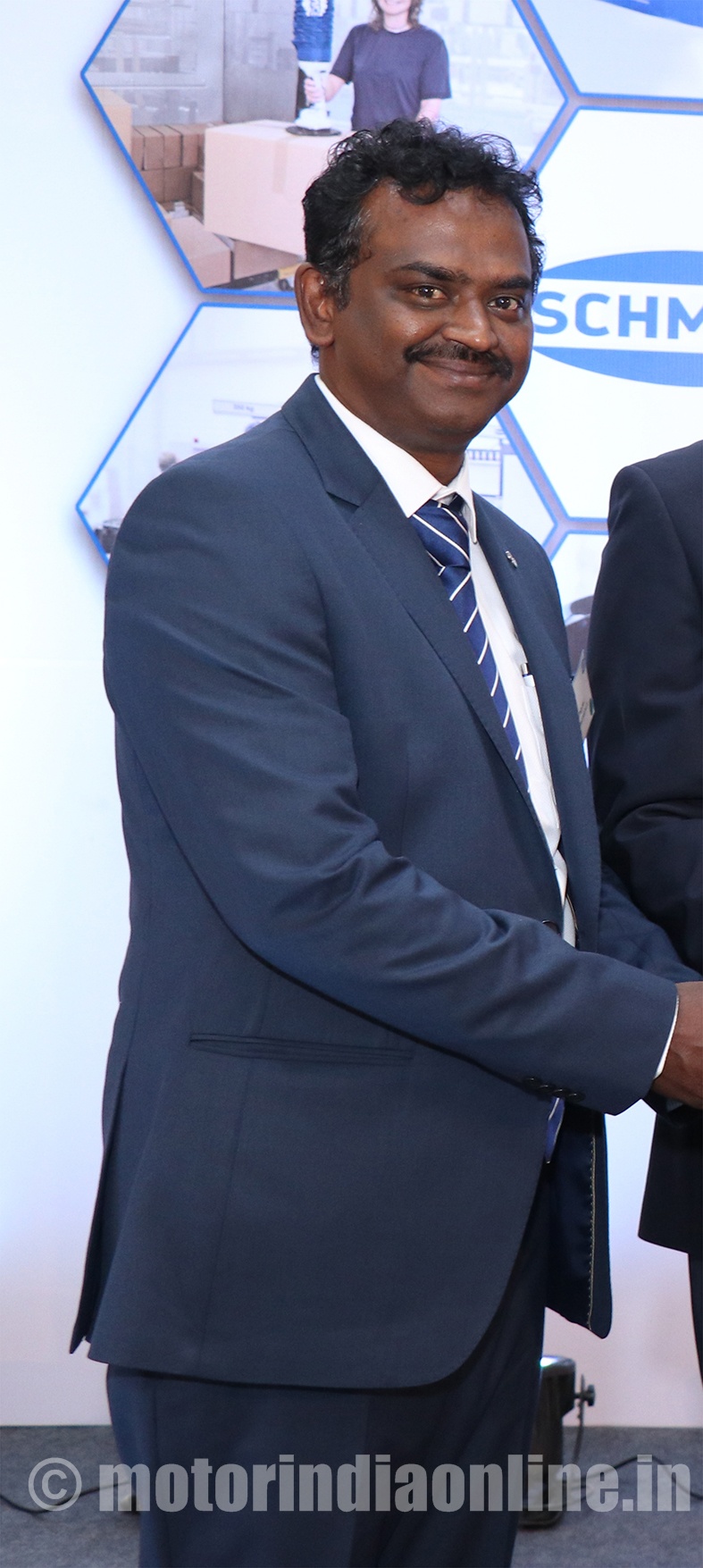After an eight-month construction period, the Minister President of the State of Baden-Württemberg, Germany, Mr. Winfried Kretschmann, inaugurated Schmalz India’s new production and office building in Pune, in December 2016. The new building offers an additional surface area of around 1,600 square meters – more than double the surface area of the existing building.

Schmalz employs more than 1,100 people worldwide and has locations in additional 16 countries. The company has had its own location in India since 1999.
At the inauguration of the new building, Mr. Wolfgang Schmalz, Managing Director, J. Schmalz GmbH, Germany, said: “It is a great honor for us to welcome the delegation accompanying the Minister President here in Pune. The visit emphasizes our good co-operation with the State Government.”
Schmalz India Pvt. Ltd. sells vacuum technology for automation and handling throughout India and has 115 employees as well as sales offices in Pune, Delhi and Chennai. At the same time, Schmalz turns out different products in Pune, for vacuum automation.
With the construction project, the company has laid the foundation for meeting the growing demand for vacuum solutions now and in the future. The new building was constructed adjoining the existing building.
Mr. Andreas Beutel, who is the Managing Director responsible for worldwide production, explained how important it is for the company to have its own branches in key international markets. “Alongside our main production location in Glatten, India is an important part of the worldwide network of the Schmalz Group – along with China and the US, it is one of our largest branches worldwide.”
After the official inauguration, the delegation members had the opportunity to do a short tour of the company and see firsthand the work of a Swabian medium-sized enterprise in an Indian metropolis. ‘Man of the house’ Philip Mani, Managing Director of Schmalz India Pvt. Ltd., led the group through different areas within the company.
Interview with Mr. Philip Mani
Excerpts:
Please give us an overview of Schmalz’ presence in India.
Schmalz India is a 100 per cent subsidiary of J. Schmalz GmbH, Germany. It started its operation in late 1999 in Hyderabad to import and sell material handling solutions using the vacuum technology. Later in 2003 it shifted to Pune which is the automotive hub and started its manufacturing activity. A certain range of products are produced in India and exported back to J. Schmalz GmbH, Germany, from its EOU unit. Apart from the manufacturing, it also imports products of J. Schmalz GmbH and sell to all customers in India, Sri Lanka, Bangladesh and Nepal. Schmalz offers solutions in automation using vacuum technology, vacuum clamping, vacuum gripping and ergonomic manual handling solution serving more than 2000 customers in India.
What are the main applications within the automotive sector you cater to?
The Schmalz vacuum technology is utilized in production of items that require work pieces to be moved, ergonomically transported, or secured. Schmalz has a hugely diverse product portfolio that can be precisely tailored to a variety of requirements like the vacuum components that help a range of industries to perform automation and handling tasks. The range of products covers vacuum suction pads, vacuum generators, mounting elements and system monitors.
What is the road map for Schmalz in India for the next two to three years?
Automaton and the use of Robots is the main factor that will trigger growth in this industry. India is an upcoming potential market for industrial robotics with a worldwide market share of approximately 15 per cent. Robotics and automation has the potential to revolutionize the industrial scenario. It promises to bring the same result as computer systems have brought in services and other sectors. In industries, most of the tasks are being considered as dull, dirty and dangerous for human beings and as such utilizing robotics and automation in these sectors would improve productivity, safety as well as the quality of the end product.
The automation industry is a big consumer of robotic technology. With such technology, the quality of products and processes improve considerably. Industry sectors such as automotive, atomic energy, defence, space, metals and textiles use robotic technology very extensively. A feature of all vacuum components and systems is the ‘use of vacuum’ as a holding force. Vacuum technology is employed in a variety of industries. Schmalz aids and assists companies from a multitude of sectors, including the automotive industry, chemicals and pharmaceuticals, the glass and woodworking sector, logistics, packaging and wind energy. We place a special emphasis on meeting the specific requirements of different industry sectors and creating individual solutions with vacuum technology.
Are there any emerging sectors that you are hoping to tap with customized products and technologies?
Industry 4.0 is the current trend of automation and data exchange in manufacturing technologies. It includes cyber-physical systems, the Internet of things and cloud computing. Industry 4.0 creates what has been called a “smart factory”. The basic principle of Industry 4.0 is that by connecting machines, work pieces and systems, businesses are creating intelligent networks along the entire value chain that can control each other autonomously. Networks and processes have so far been limited to one factory. But in an Industry 4.0 scenario, these boundaries of individual factories will most likely no longer exist. Instead, they will be lifted to interconnect multiple factories or even geographical regions.
Schmalz has already started to align its products suitable for Industry 4.0. The SCPSi compact ejectors and SNGi-AE type Needle grippers are already equipped with IO link and NFC technology which make them suitable for Industry 4.0 thus facilitating the way to communicate and co-operate in real time. Schmalz will roll out more products in this technology which is going to rule the future.
